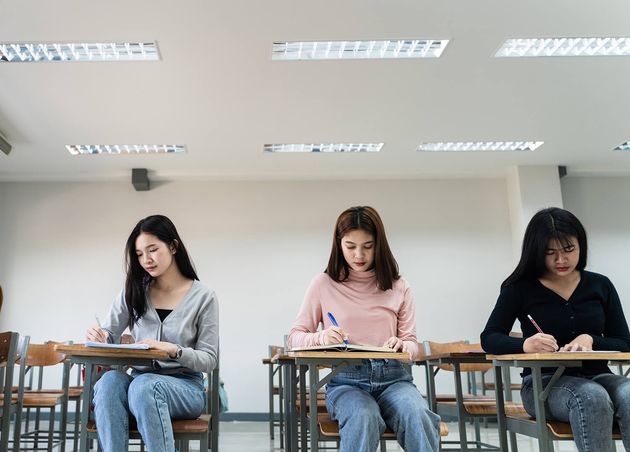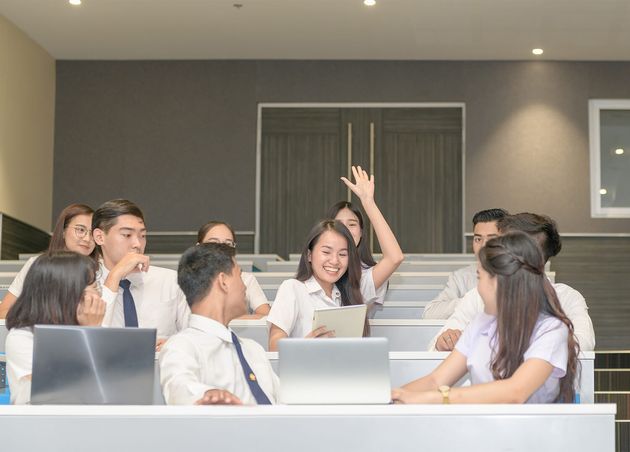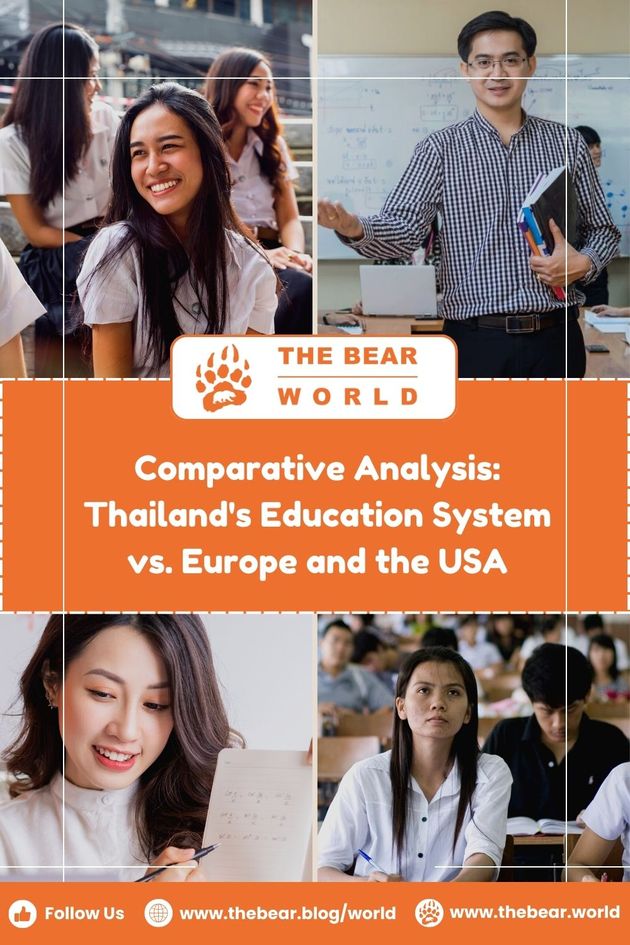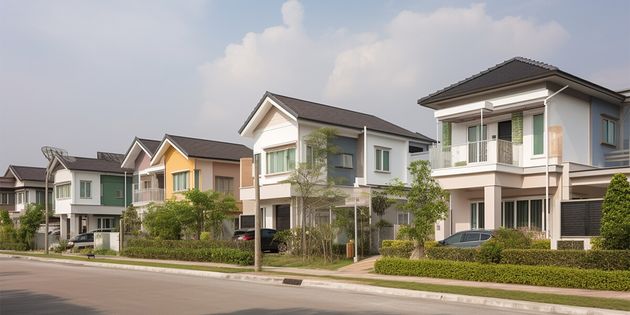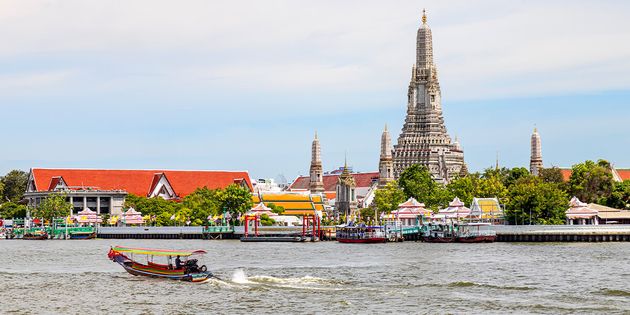Comparative Analysis: Thailand's Education System vs. Europe and the USA
At the heart of modern society lies the pivotal role of education, serving as the bedrock for acquiring indispensable skills and knowledge necessary for navigating the complexities of our globalized world. The intricate tapestry of educational systems unfolds uniquely in each country, shaping the future of countless individuals. Delving into the distinct approaches of Thailand, Europe, and the United States provides a captivating exploration of the diverse methodologies, cultural influences, and philosophies that underpin their respective education systems.
Embarking on this comparative journey promises a glimpse into the structural nuances of educational frameworks and a profound understanding of the cultural and societal factors that mold students' educational experiences worldwide. As we unravel the intricacies of Thailand's educational system, marked by its ethical teachings and cultural nuances, and compare it with the systems in Europe and the USA, a rich tapestry of educational diversity emerges.
Join us in this exploration as we navigate through the corridors of learning, encouraging you to delve deeper into the profound impact of education on societies and individuals.
Thai School System: A Three-Tiered Structure
Thailand's educational system is divided into three main sections: pre-primary, primary, and secondary. While pre-primary education is not mandatory, it is encouraged and free for children aged three to five. Primary education is compulsory for ages six to twelve, and secondary education has free and fee-charging components. The system changed around 1999, emphasizing decentralization, innovative teaching methods, and a student-focused approach.
🚀 Expat Fact!
The educational system in Thailand adopts the American and European models in terms of educational system, training technique, and curriculum.
Expatriate Insight: Influences from the US and Europe
Surprisingly, Thailand's educational system draws inspiration from American and European models regarding structure, training techniques, and curriculum.
Attendance Policies: A Contrast in Approaches
Several classes in European and American schools have a policy for absence. Generally speaking, students are allowed to miss only 3 classes per semester. Many professors and teachers would advise that students make good use of the 3 absences allowed.
Conversely, attendance is not compulsory for most schools in Thailand, particularly at the college level. No one would pay more attention to whether a student comes to class or not. Some students like how it works in Thailand as some students love to miss multiple classes for some unintentional occasion or, in any event, for their psychological health.
It is assumed that a college student is obligated to deal with themselves. It is their own decision whether to pass or fail the class.
Assessment Methods: Exams vs. Hands-on Experience
Something about the American educational system is that students' grades depend mostly on homework tasks. Hands-on work and experience are also preeminent in the American schooling system. Students are expected to do genuine interviewing and reporting.
Conversely, in Thailand, exams and performance tests grade students. A lot of the course grade depends on mid-term and final exams. Homework assignments contribute about 5-10% to the grades. It is easier to study in America than in Thailand, though the workload can be frustrating.
Community Vibe: Small vs. Large Campus
The University of Nevada boasts a smaller community feel, allowing students to encounter familiar faces regularly. Thai universities, on the other hand, accommodate larger student populations with around 25,000 undergraduates. This results in much larger classrooms because there are roughly more than 200 students in each classroom as opposed to the classrooms in Europe and America, which have just around 40 students per class. When studying in America, such a small community makes it easier to have friends.
Uniformity in Dress Code: Varied vs. Uniform
There is more freedom in American and European schools as there are no policies for school uniforms. Students can put on anything that they like to school. In Thailand, all students appear indistinguishable as they are expected to wear school uniforms.
A white with collar and black pants or black skirt is the uniform for each school in Thailand. A distinguishing factor that will help you recognize each school is the pin containing the school logo that each student needs to affix to their shirt and belt. Wearing a school uniform is not a problem for Thai students as they grew up wearing uniforms to primary school, secondary school, and, surprisingly, college.
Education Quality: Recognized and Respected
Even though Thailand is a tourist destination, its educational system is quite good. International examination institutions have recognized the quality of the educational system in Thailand. Higher education takes on the model of European and American nations in educational programs, curricula, and educational methods.
Universities in Thailand specialize in tourism, media arts, engineering technology, medicine, business administration, etc. For more than 10 years now, many university degrees have been recognized by colleges in the universities in developed nations.
🚀 Expat Trivia!
The expenditure of Thailand's educational system represents 20.3% of the Gross domestic product
Teaching Standards: Globalization of Education
Thailand's higher education system has undergone significant advancements. After obtaining their degrees, many teachers choose to travel to the USA and Europe. This exposure contributes to adopting Western teaching methods and textbooks, resulting in a highly globalized educational approach. Thailand boasts around 66 private universities, surpassing the number of state-funded universities in enrollment and institutions. The development of private universities in Thailand began early and has seen remarkable growth over time.
Mandatory education in Thailand spans 12 years, as stipulated in the constitution. Impressively, the nation allocates 20.3% of its Gross Domestic Product (GDP) to education expenditure, underlining the significant importance placed on education at a national level. Parents are relieved from paying fees from kindergarten to secondary school graduation, encompassing textbooks, tuition, stationery, school uniforms, and extracurricular activities like computer classes, military training, and camping. Notably, there is no distinction in treating private and public schools regarding these educational expenses.
As children enter the school system, they benefit from formal education, various teaching tools, structured courses, performance assessments, and diverse teaching methods. The educational focus extends beyond academic knowledge, emphasizing the development of values and essential interpersonal skills. This comprehensive approach aims to equip students to excel academically, contribute meaningfully to society, and foster self-sufficiency.
Cultural Influences on Education: A Unique Perspective
The remarkable aspect of Thailand's educational system lies in its emphasis on ethical and moral teachings. In contrast to domestic schools' approach to moral education, Thailand's educational institutions prioritize cultivating good behaviors. This focus is reflected in the demeanor of Thai students, who are generally modest, cooperative, consistent, and polite.
Upon entering a Thai school, one is greeted with an environment akin to a well-tended garden nursery. The campus exudes cleanliness and orderliness, impeccably tidy classrooms, bright and well-maintained facilities, and modern educational equipment. The disciplined and respectful atmosphere extends throughout the campus, where students are well-behaved, and instances of fighting or disruptive behavior are notably absent. The success of Thailand's ethical training can be attributed to meticulous attention to practical results and details. Additionally, the influence of Buddhist beliefs in Thailand plays a significant role. Schools in Thailand actively encourage students to believe in Buddhism and even establish sanctuaries and temples within the school premises for students and teachers.
Compared to Europe and America, Thailand's educational system appears more receptive. Beyond the absence of educational expenses, the country's geographical proximity to China and convenient transportation infrastructure, including direct flights to major cities, add to the overall appeal. This contrasts with the occasional challenges faced by teachers in Europe and America when attempting to establish a consensus on the appropriate teaching methods and educational programs for moral guidance.
Historical context becomes a valuable methodology for understanding the diverse narrative of moral education in European and American schools, revealing the struggles and triumphs that have shaped the current landscape.
In conclusion, the comparative analysis of Thailand's education system against those of the United States and Europe illuminates distinct differences in structure, teaching methods, and cultural influences. While each system has unique strengths and weaknesses, the underlying truth remains unchanged: the universal nature of children. Regardless of the educational approach, the essence of connecting with students, sharing laughter, expressing love, and positively impacting their lives is a common thread. Recognizing this fundamental similarity underscores the importance of focusing on the shared humanity in education rather than fixating on disparities.
It is crucial to appreciate that differences do not inherently signify superiority or inferiority; instead, they contribute to the richness of the educational landscape. Embracing each system's uniqueness and acknowledging their diverse perspectives which allow for a more holistic understanding of global education. Fostering an environment where educators prioritize their universal role in shaping young minds creates a foundation for meaningful and impactful learning experiences, transcending cultural and structural variations in pursuing nurturing the next generation.
Lifestyle Bear
More From The Bear World
Life Beyond the City: Embracing Suburban Living in Thailand
Lifestyle Bear





